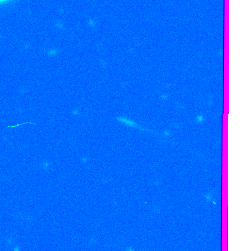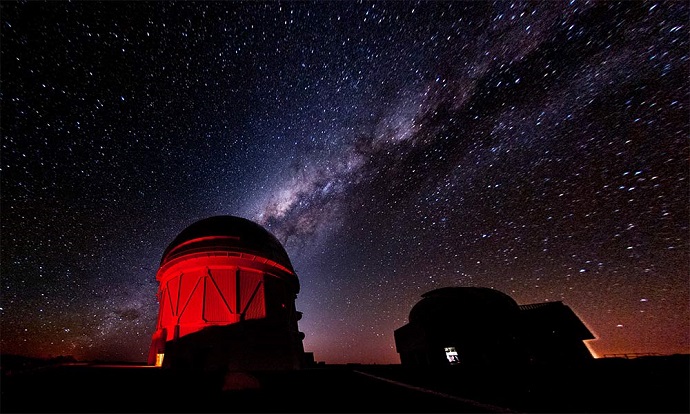March 4, 2016
A University of Rochester scientist has discovered a new comet – the first to be discovered by an astronomer associated with the University of Rochester or the Rochester area in over a century, his colleagues believe.
David Cameron, a visiting scientist in Eric Mamajek’s research group in the Department of Physics and Astronomy, recently discovered a new short-period comet named Comet P/2015 PD229 (ISON-Cameron).
Cameron discovered the comet last August while analyzing images taken in May 2015 by Mamajek with the Dark Energy Camera (DECam) on the Blanco 4-m telescope at the Cerro Tololo Inter-American Observatory in Chile.

First observations of a candidate comet seen by visiting scientist David Cameron at Cerro Tololo Inter-American Observatory. The animation shows several raw frames with the comet near the center. The small streaks that appear and disappear between the images are cosmic rays.
“We were looking not for comets, but objects in the outer solar system called Kuiper Belt objects, which orbit the Sun far beyond the orbit of Neptune,” said Cameron. “The former planet Pluto is the most well known Kuiper Belt object. In our images, these objects appear as little dots of light that, over time, seem to slowly jump from point to point. While searching our images one day, I was surprised to find a small streak of light with a tail, and like the Kuiper Belt objects it also jumped from point to point over time. The object wasn’t described in any database, so that was it: an unexpected, new comet discovery.”
Mamajek ‘s group has been using DECam to discover both faint young failed stars (“brown dwarfs”) in nearby star clusters (a project led by PhD student Fred Moolekamp) and new outer solar system objects (led by Cameron).
“Discovering a comet is not particularly rare nowadays, but still exciting,” said Mamajek. “About 80 comet of all types were discovered last year. This is one of about 500 Jupiter family comet, which means that Jupiter strongly influences its orbit around the Sun.”
Though no comets have been found by Rochester astronomers in the past century, Rochester does have a history in comet hunting. “The prolific 19th-century comet hunter Lewis Swift discovered or co-discovered 13 comets, including the famous comet 109P/Swift-Tuttle – the parent body of the Perseid meteor shower,” said Mamajek.
Swift (1820-1913) was born in the village of Clarkson in Monroe County, New York, and in recognition of his astronomical discoveries received an honorary degree from the University of Rochester in 1879.
Mamajek explained that the new comet appears to be about 13 miles across, “larger than most other Jupiter family comets.” It orbits the Sun every 19.2 years, mostly between the orbits of Jupiter and Saturn. The comet reached its closest point to the Sun in August 2015 just inside the orbit of Jupiter. Given their icy natures, low inclinations, and orbits crossing the large outer planets, it is thought that Jupiter family comets originate from the Kuiper Belt beyond Neptune. When their orbits bring them closer to the Sun, the resultant heating causes their volatile compounds, including water, to sublimate off and produce a distinctive tail.
In recent years, Rochester astronomers have also discovered the first ring system around an exoplanet, the first indirect evidence for the presence of an exomoon, contributed to new technologies for the hunting of asteroids, developed theories for the shape of the orbits of stars in our galaxies, and explained how stellar death can lead to twin celestial jets.













